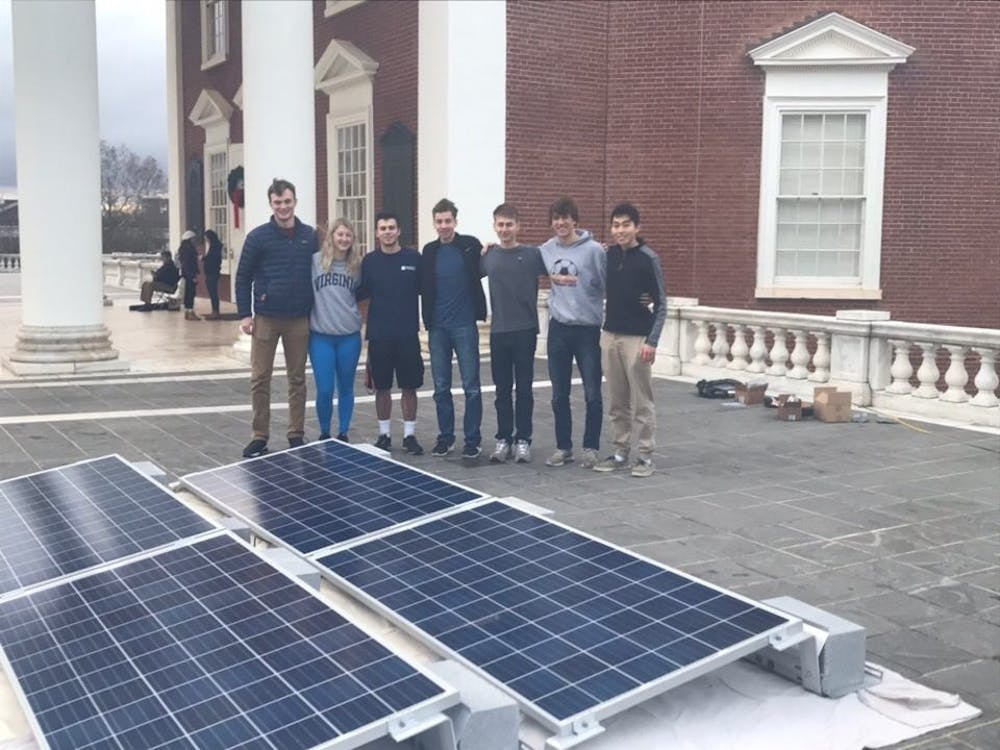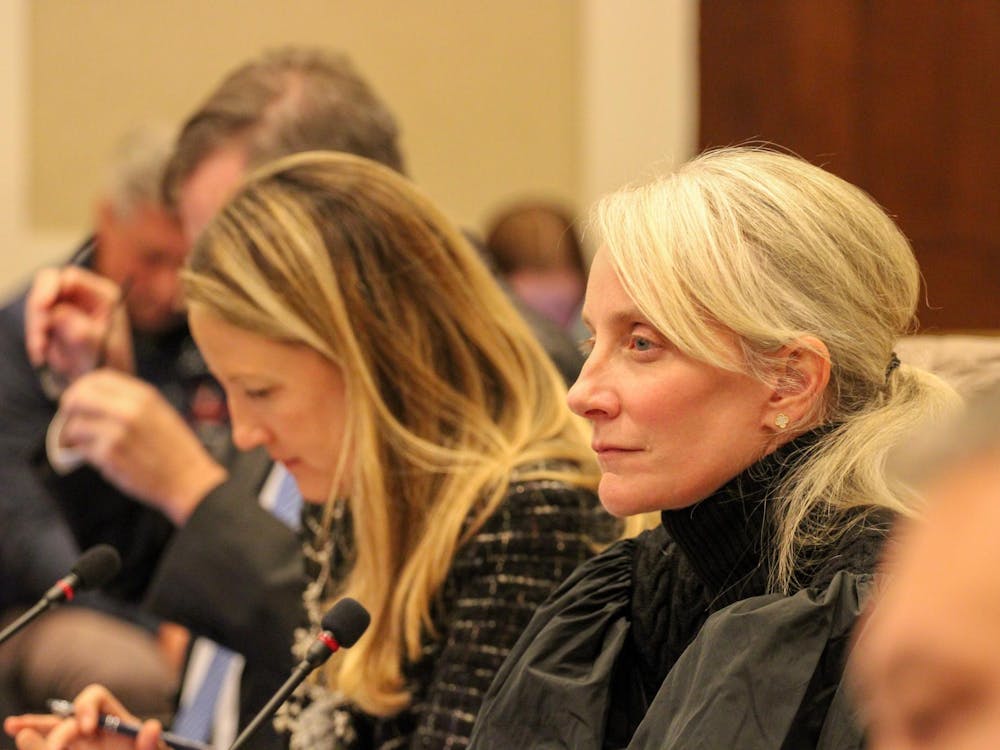The Charlottesville Solar Project — a contracted independent organization that works to make solar energy widely accessible — fully powered Lighting of the Lawn this year.
Erik Toor — a third-year Commerce student and a member of Class Council’s Lighting of the Lawn committee and Charlottesville Solar Project — headed the team carrying out the initiative. Toor said 1960 watts of LED lights — at least 1000 lights, Toor estimated — lit up the East and West wings of the Academical Village and the Rotunda Thursday evening. Toor said the light show went as planned and looked the same as last year.
“I had the idea last year, and I proposed it to the LOTL committee about lighting up the Lawn with solar, and they loved the idea so … we went out for multiple grants, and got them to light up the Lawn with solar energy,” Toor said in an interview before the light show. “We’re powering the entire show with an array that is going to be on the right terrace of the Rotunda.”
Gordon Bailey, a co-chair of the LOTL committee and a fourth-year College student, said he and his co-chair, fourth-year College student Katie Mendenhall, supported the initiative.
“I think that’s what’s really nice about LOTL, we have students that … like to try new things,” Bailey said. “LOTL started off with just everyone coming together and then a student had the bright idea to actually light the pavilion of the Rotunda itself, so we’re continuing to foster that.”
Toor said the process of obtaining solar energy resembles water flowing through a pipe, with electrons replacing water. Electrons hit the grid and are then converted through an inverter to a certain wavelength — 60 Hertz in the case of LOTL, Toor said.
“Solar only works when the sun’s up and Lighting of the Lawn is at night, so during the day, the solar panels are going to be out and they’re going to be charging, they’re going to be obtaining sunlight all day and it’s going to be charging batteries that are going to be inside the Rotunda,” Toor said. “At night time when LOTL happens, we’re just going to [use] the batteries that have been charging all day.”
Toor said the committee wanted to ensure there was more than enough electricity, but noted that the show could have been powered off one hour of charging. Bailey said there was a certain risk with powering the lights in a new way such as solar, but said he was confident the initiative would go as planned.
Toor said much of the funding came from in-kind donations. Sun Tribe Solar Company, a solar energy company in Charlottesville, provided panels — four in total — and Aerocompact, a solar energy company in North Carolina, provided racking.
The Ann Warrick Lacy Student Experiential Center lent the batteries, Toor said, and Student Council and the School of Engineering and Applied Sciences provided grants to the committee to pay for inverters, wiring and other supplies.
Amelia Thomas, a fourth-year College student, member of the Charlottesville Solar Project and marketing and research associate at Sun Tribe, said the University and Charlottesville Solar Project had collaborated on research before Toor reached out to her regarding the initiative.
“[Erik Toor] came up with the whole plan,” Thomas said. “Basically we decided that since [Charlottesville Solar Project] had helped … we thought we would donate the panels.”
Devin Welch — Sun Tribe’s vice president of business development — said previous collaborations between the company and the University include solar array installations at Clemons Library and Ivy Stacks Expansion Building.
“The University’s commitments to clean energy are impressive and ever-increasing,” Welch said. “It’s symbolic of a society-wide shift to clean energy. It’s been amazing to see students at the forefront of clean energy.”
Toor and Bailey said that although the project was single-use and therefore would not make much of an environmental impact, one of the main goals of the project was to promote solar energy as a viable product.
“I think it speaks volumes about the dedication people have to Lighting of the Lawn,” Bailey said. “I think it’s really cool to have a light show off of solar. LEDs lights don’t necessarily take a lot of wattage, from a sustainability standpoint … I think it’s more of a cool factor from me.”







